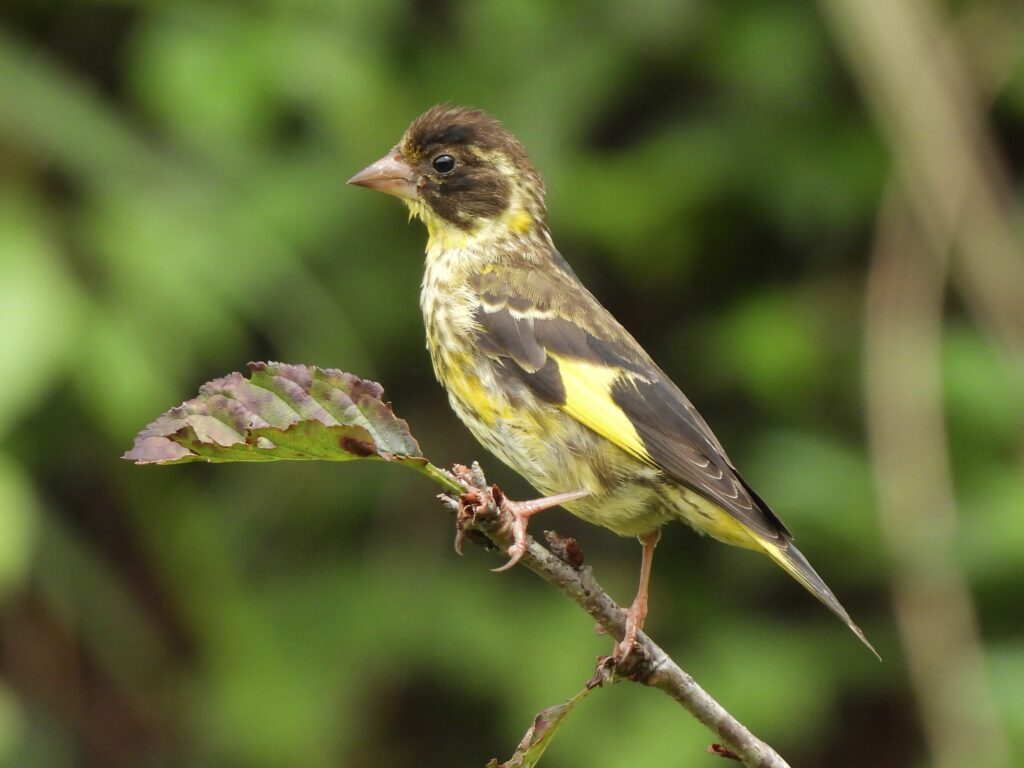Vietnam 2024
4 – 14 Aug 2024
A green peahen (Pavo muticus) with two peachicks keeping low profile in the grasslands of Cat Tien National Park, 12 Aug 2024
Two Spanish biologists embarked on an exciting two-month backpacking trip to get to know the wildlife of southeast Asia. A limited budget and a long bucket list were the main forces shaping the itineraries. Our main focus was to get to know places and the intricacies of nature watching in the region, so we focused on visiting essential places in different ecoregions and countries, rather than on getting extremely long lists or looking for tough mega species. We planned most of the itinerary and accommodation in advance and mostly looked for birds by our own means, without guides or rental cars.
This is the second of a series of reports trip and field notes about our time birding in Singapore and West Malaysia in the Malay Peninsula; Sabah (Malaysia) and Brunei in Borneo; Palawan and Manila in the Philippines; Hanoi and Da Lat plateau in Vietnam; Cambodia and Thailand.
Vietnam is an extremely biodiverse country located between the South China Sea side of the Indochina Peninsula and the Annamite Range. A country best known by its ideology and cuisine, Vietnam boosts a welcoming and intriguing experiences for all visitors, plus the opportunity to connect with a plethora of range-restricted wildlife unique to the region, alas many extremely endangered and close to extinction. For our trip, a flight from Manila dropped us in Hanoi airport. We took a domestic flight to Ho Chi Minh city and transferred to the Da Lat region and Cat Tien National Park before visiting the old Saigon and leaving towards Phnom Penh, Cambodia on a night bus. Although the dates were not ideal (perhaps December to March would be best for such itinerary), we made the most out of our wanders through the last remnants of habitat of several critically endangered species among our targets, evidencing the extent of wildlife loss.

Itinerary
Days 1 – 2 (4 – 5 Aug 2024) Arrival from Manila and stay in Hanoi. Urban birding.
Days 3 – 5 (6 – 8 Aug 2024) Transfer and stay in Da Lat. Daily visits to Ta Nung valley and Mount Lang Bian.
Days 6 – 9 (9 – 12 Aug 2024) Transfer and stay in Cat Tien National Park. Daily visits: one-day birding guide service and one-day bird hides.
Days 10 – 11 (13 – 14 Aug 2024) Stay in Ho Chi Minh city. Land departure to Cambodia.
Our short stay in Hanoi had sightseeing as the main focus. We allocated time to visit an island of the Red River crossing the city, where we connected with the only gray-throated martins, gray-breasted prinia and ‘Chinese‘ leucopsis white wagtails of our whole trip. The city’s Botanic Garden offered the near-endemic commixtus form of Asian tit.
Da Lat area obliged with great encounters with some of our targets in the area, despite being low season. On our several visits to Ta Nung valley, we connected with several near-endemic and endemic species such as Indochinese barbet, gray-crowned crocias and Vietnamese greenfinch, local endemic forms of rufous-backed sibia, Mr’s Gould’s sunbird and black-throated sunbird plus bonus additions including top views of black eagle and silver-eared mesia.
Also next to Da Lat, hiking Mount Lang Bian proved eventful, offering a mix of endemic species with local forms of widespread species we are familiar with, all while crossing a gradient of pine trees and broadleaf forest while gaining height. Highlights include near-endemic necklaced barbet and white-cheeked laughingthrush; the endemic and distinctive local forms of white-browed shrike-babbler, black-throated tit, large niltava and black-headed sibia; habitat specialists with isolated populations as chestnut-vented nuthatch or Hume’s treecreeper; plus among the few blue-bearded bee-eaters, white-bellied erpornis and white-tailed robins of our trip.
Cat Tien National Park was full of life despite lacking the numerous migratory species expected during the boreal winter. We bagged an array of new species to our trip, in big part thanks to the guidance of Mr Trong, an experienced local ornithologist. We secured in situ views of main target but shy species including banded kingfisher, blue-winged pitta and near-endemic bar-bellied pitta, plus the scarce near-endemic gray-faced tit-babbler. Driving through the grasslands further south — the last stronghold of the mainland Javan rhino until their extinction just 14 years ago —, we enjoyed encounters with targets including green peafowl, Chinese francolin and blossom-headed parakeet, plus unexpected ashy-headed green pigeon, violet cuckoo and barred buttonquail. The cherry on top was a day in the National Park’s bird hides, where we got awesome views of smart Siamese firebacks and near-endemic Germain’s peacock-pheasant among diverse drongos, babblers and bulbuls.
Our time in Vietnam yielded a total of 157 bird species, in addition to many other endemic herps, plants and arthropods and impressive mammals, including herds of gaur and smart but endangered black-shanked doucs and yellow-cheeked gibbons. This first impression of some of Vietnam’s top birding destinations paid off and taught us the dynamics of navigating through this captivating country, and hopefully will fuel a more comprehensive visit during suitable dates in the future.
Field notes
Blog posts about field notes of our time in Vietnam in 2024 are out.
